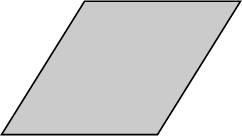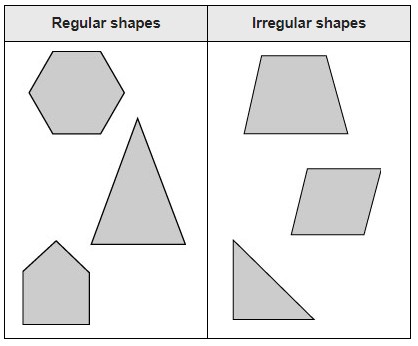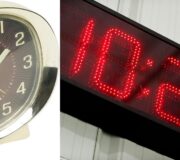What Are Regular And Irregular Shapes? Explained For Elementary School
This blog will be answering the questions “what is a regular shape?” and “what is an irregular shape?” as well as providing you with all of the information you need to help your students secure their shape knowledge. There are also a number of shape based questions for your child to test their skills with at the bottom of the post.
Ultimate Math Vocabulary List
Help your students learn their shape names and other math vocabulary with this elementary math vocabulary list.
Download Free Now!What is a regular shape?
A regular shape is a 2D shape where all (interior) angles and sides measure the same.
What is an irregular shape?
An irregular shape is a shape which has sides and angles of different lengths and sizes, i.e. the sides are not all of equal length, the interior angles are not all the same size.
Regular vs irregular shapes: What do they look like?
A square, by definition, is a regular shape: it is, in fact, a regular rectangle. This is because the shape is made up of 4 equal sides and 4 equal angles. In the case of a square, these are 4 right angles (90 degrees). However, other quadrilaterals such as parallelograms, are irregular polygons as the length of the sides and interior angles are not all equal.
A regular triangle is called an equilateral triangle, as all interior angles are equal and all sides are equal. However, a scalene triangle or an isosceles triangle are examples of irregular polygons as their sides and interior angles are not all equal.
Examples of irregular shapes and regular shapes

When will my child learn about regular and irregular shapes in elementary school?
When referring to certain shapes (including regular shapes), the term ‘polygon’ is used – a polygon is a 2D shape with straight sides. The number of sides does not matter.
Throughout elementary school, students will explore and expand their knowledge of geometry and explore the side and vertex properties of different shapes, learn the terminology, such as hexagon, heptagon and octagon, and begin to draw different shapes.
In 3rd grade, students will distinguish between different types of polygons: regular and irregular. The terminology of ‘regular polygon’ is first introduced. Students will compare lengths and angles to decide if a polygon is regular or irregular.
In 4th grade, students distinguish between regular and irregular polygons based on reasoning about equal sides and angles. Fourth graders will begin to identify other properties that classify shapes such as parallel and perpendicular lines, acute, obtuse and right angles. Fourth graders will also identify lines of symmetry within shapes, which will always be present in regular polygons (multiple times!).In 5th grade, students compare and classify geometric shapes based on their properties and sizes and find all the subcategories a particular shape belongs to (for instance, a rhombus is also a parallelogram and a quadrilateral).
In 5th grade, students compare and classify geometric shapes based on their properties and sizes and find all the subcategories a particular shape belongs to (for instance, a rhombus is also a parallelogram and a quadrilateral).

Regular and irregular shape practice questions
1) The diagram shows a pentagon (not drawn accurately). Each side of the pentagon is the same length. Is the shape a regular pentagon? Explain your answer.

2) Here is an equilateral triangle drawn on a circle.

Use a ruler to draw a regular hexagon on this circle.

3) Jack says, “This rhombus is a regular quadrilateral.” Explain why Jack is not correct.

4) Draw crosses on the two shapes that are in the wrong places in the sorting diagram.

Wondering about how to explain other key math vocabulary to your children? Check out our Math Dictionary For Kids, or try these other math terms:
Do you have students who need extra support in math?
Give your students more opportunities to consolidate learning and practice skills through personalized math tutoring with their own dedicated online math tutor.
Each student receives differentiated instruction designed to close their individual learning gaps, and scaffolded learning ensures every student learns at the right pace. Lessons are aligned with your state’s standards and assessments, plus you’ll receive regular reports every step of the way.
Personalized one-on-one math tutoring programs are available for:
– 2nd grade tutoring
– 3rd grade tutoring
– 4th grade tutoring
– 5th grade tutoring
– 6th grade tutoring
– 7th grade tutoring
– 8th grade tutoring
Why not learn more about how it works?
The content in this article was originally written by primary school teacher Sophie Bartlett and has since been revised and adapted for US schools by elementary math teacher Jaclyn Wassell.





